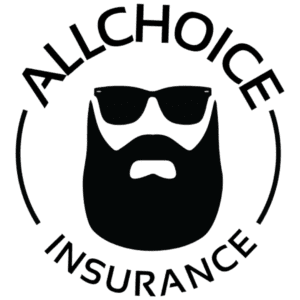Top Seven Tips For Getting The Best Auto Insurance

Auto insurance is an essential part of owning and operating a vehicle. It protects you financially in case of an accident, theft, or other unexpected events. With so many insurance providers and policy options available, it can be challenging to determine which one is best for you. That’s why we’ve compiled a list of the top seven tips for getting the best auto insurance.
By following these tips, you’ll be able to find an insurance policy that fits your needs and budget, and provides you with the coverage you need for peace of mind on the road.
Whether you’re a new driver or a seasoned one, these tips will help you make an informed decision when it comes to choosing auto insurance. So, let’s dive in!
Top Seven Tips For Getting The Best Auto Insurance
Auto insurance is an essential investment for car owners and drivers, providing financial protection in the event of accidents, theft, or other unforeseen circumstances. However, with so many insurance providers and policy options available, it can be challenging to determine which one is the best fit for your needs and budget. That’s why we’ve compiled a list of the top seven tips for getting the best auto insurance. These tips cover everything from shopping around for quotes to reviewing and updating your policy regularly, helping you make an informed decision and ensure that you have the right coverage for your current situation:
Shop around for quotes: One of the best ways to get the best auto insurance is to shop around and compare quotes from different insurance providers. This will help you find the most affordable rates and coverage that fits your needs.
Consider your coverage needs: Before choosing an auto insurance policy, consider your coverage needs. This includes liability coverage, collision coverage, and comprehensive coverage. Make sure you have enough coverage to protect yourself and your vehicle in case of an accident or other unexpected events.
Bundle your policies: If you have multiple insurance policies, consider bundling them with the same provider. This can help you save money on your premiums and simplify your insurance management.
Maintain a good driving record: Your driving record is a significant factor in determining your auto insurance rates. Maintaining a good driving record with no accidents or traffic violations can help you qualify for lower rates.
Choose a higher deductible: Choosing a higher deductible can help you save money on your premiums. However, make sure you choose a deductible that you can afford to pay out of pocket in case of an accident.
Take advantage of discounts: Many insurance providers offer discounts for safe driving, multiple vehicles, and other factors. Make sure to ask your provider about available discounts that you may qualify for.
Review and update your policy regularly: As your driving habits and coverage needs change, it’s important to review and update your auto insurance policy regularly. This will ensure that you have the right coverage for your current situation and can help you save money on your premiums.
Overall, getting the best auto insurance requires careful consideration of your coverage needs, a good driving record, and taking advantage of available discounts. Shopping around for quotes, bundling policies, and choosing a higher deductible can also help you save money on your premiums. Finally, reviewing and updating your policy regularly ensures that you have the right coverage for your current situation. By following these top seven tips, you can find an auto insurance policy that provides the coverage you need at a price you can afford.
What Factors Affect Auto Insurance Rates?
Auto insurance rates are influenced by a variety of factors, including:
Age and gender: Younger drivers and male drivers tend to have higher insurance rates due to their higher risk of accidents.
Driving record: A clean driving record with no accidents or tickets can qualify you for lower insurance rates, while a history of accidents or violations can lead to higher rates.
Vehicle type: The type of vehicle you drive can affect your insurance rates, with more expensive or high-performance cars typically costing more to insure.
Location: Your location can also play a role in your insurance rates, with drivers in urban areas often paying higher rates due to higher rates of accidents and theft.
Coverage limits: The amount of coverage you choose can also affect your insurance rates, with higher limits leading to higher premiums.
Deductible: The amount of your deductible, or the amount you pay out of pocket before your insurance coverage kicks in, can affect your premiums.
Credit score: In some states, your credit score can also play a role in your insurance rates, with lower scores leading to higher premiums.
It’s important to keep these factors in mind when shopping for auto insurance and to compare quotes from multiple providers to find the best rates for your situation.
How Can You Lower Your Premiums?
There are several ways to lower your auto insurance premiums:
Increase your deductible: By choosing a higher deductible, or the amount you pay out of pocket before your insurance coverage kicks in, you can reduce your monthly premiums.
Take advantage of available discounts: Many insurance providers offer discounts for things like safe driving, bundling policies, or having certain safety features on your vehicle. Be sure to ask your provider about available discounts and take advantage of them if you qualify.
Consider usage-based insurance: Some insurance providers offer usage-based insurance programs that track your driving habits and adjust your premiums accordingly. If you’re a safe driver, this can help you save money on your coverage.
Review your coverage needs: Regularly review your coverage needs and adjust your policy as necessary to ensure you’re not paying for coverage you don’t need. For example, if you have an older car that’s paid off, you may not need comprehensive or collision coverage.
Improve your credit score: In some states, your credit score can affect your insurance rates. By improving your credit score, you may be able to qualify for lower premiums.
Shop around: Be sure to compare quotes from multiple insurance providers to find the best rates for your situation. Don’t just focus on price, but also consider the coverage options and reputation of the insurance provider.
By taking these steps, you can lower your auto insurance premiums and save money on your coverage over time.
What Are Some Common Mistakes To Avoid When Purchasing Auto Insurance?
When purchasing auto insurance, it’s important to avoid common mistakes that can lead to higher premiums or inadequate coverage. Here are some common mistakes to avoid:
Not shopping around: Failing to compare quotes from multiple insurance providers can result in paying more than necessary for coverage.
Choosing the wrong coverage limits: It’s essential to choose coverage limits that match your needs and budget. If you choose limits that are too low, you could end up paying out of pocket for damages or injuries in the event of an accident.
Focusing only on price: While cost is an important factor when choosing auto insurance, it shouldn’t be the only factor. It’s important to consider the coverage options and reputation of the insurance provider as well.
Not disclosing all relevant information: Failing to disclose information such as previous accidents or tickets can lead to higher premiums or even a denial of coverage.
Overlooking discounts: Many insurance providers offer discounts for things like safe driving, bundling policies, or having certain safety features on your vehicle. Failing to take advantage of these discounts can result in paying more than necessary for coverage.
Ignoring the fine print: It’s important to read and understand the terms and conditions of your auto insurance policy, including any exclusions or limitations on coverage.
By avoiding these common mistakes and carefully choosing your auto insurance policy, you can ensure that you have the coverage you need at a price you can afford.
How Can You Determine How Much Coverage You Need For Your Vehicle?
Determining how much coverage you need for your vehicle can depend on several factors. Here are some steps you can take to help determine the right amount of coverage:
Know the minimum requirements: Start by understanding the minimum coverage requirements in your state. You’ll need to carry at least this amount of coverage, but it may not be enough to fully protect you in the event of an accident.
Consider your assets: If you have significant assets, such as a home or savings, you may want to consider purchasing higher liability coverage limits to protect yourself in the event of a lawsuit.
Assess your risk: Consider your driving habits, the driving conditions in your area, and the likelihood of theft or other damage to your vehicle. This can help you determine if you need additional coverage beyond the minimum requirements.
Evaluate your vehicle’s value: The value of your vehicle can also impact your coverage needs. If your car is worth a lot of money, you may want to consider purchasing collision and comprehensive coverage to protect your investment.
Consult with an insurance agent: An insurance agent can help you evaluate your coverage needs and provide guidance on the right types and amounts of coverage for your situation.
By taking these steps and carefully considering your coverage needs, you can ensure that you have the right amount of coverage to protect yourself and your assets in the event of an accident.
What Types Of Auto Insurance Are Available, And How Do They Differ In Terms Of Coverage And Cost?
There are several types of auto insurance available, each offering different levels of coverage and cost. Here are some of the most common types of auto insurance:
Liability insurance: Liability insurance covers damages and injuries you may cause to other people and their property in an accident. This is typically the minimum required coverage by law.
Collision insurance: Collision insurance covers damage to your vehicle in an accident, regardless of who is at fault. This coverage typically has a deductible.
Comprehensive insurance: Comprehensive insurance covers damage to your vehicle from non-collision incidents, such as theft, vandalism, or weather-related events. This coverage typically has a deductible.
Personal injury protection (PIP) insurance: PIP insurance covers medical expenses for you and your passengers in the event of an accident, regardless of who is at fault.
Uninsured/underinsured motorist insurance: This type of insurance covers you in the event that you are in an accident with a driver who doesn’t have enough insurance to cover the damages or no insurance at all.
The cost and coverage of each type of insurance can vary depending on factors such as your driving history, location, and the type of vehicle you have. Liability insurance is typically the cheapest option, while comprehensive insurance is typically the most expensive. When selecting an insurance policy, it’s important to evaluate your coverage needs and budget to determine the right type and amount of coverage for you. It’s also important to shop around and compare quotes from multiple providers to ensure you’re getting the best coverage at the best price.
What Should You Look For In An Insurance Provider?
When selecting an insurance provider, it’s important to look for several key factors to ensure you’re getting the best coverage and service. Here are some things to consider:
Coverage options: Look for an insurance provider that offers a range of coverage options to meet your needs. They should be able to explain the different types of coverage and help you select the right policy for your situation.
Price: While price shouldn’t be the only factor you consider, it’s important to compare quotes from multiple providers to ensure you’re getting the best value for your coverage.
Customer service: Look for an insurance provider that has a reputation for excellent customer service. They should be easy to contact, responsive to your needs, and willing to explain your coverage and answer your questions.
Financial stability: You want to select an insurance provider that is financially stable and has a good reputation in the industry. Check their financial ratings from third-party rating agencies to ensure they have the resources to pay claims.
Reputation: Look for an insurance provider with a good reputation in the industry and among their customers. Read reviews and ask for recommendations from friends and family members who have had positive experiences with their insurance provider.
Claims process: Review the claims process and make sure you understand how to file a claim and what the process entails. A good insurance provider should have a straightforward and efficient claims process.
By considering these factors and doing your research, you can select an insurance provider that meets your needs and provides excellent coverage and service.
Conclusion
In conclusion, getting the best auto insurance requires some research and careful consideration of your needs and budget. By understanding the factors that affect auto insurance rates, you can take steps to lower your premiums and find the right level of coverage for your situation.
It’s important to avoid common mistakes when purchasing auto insurance, such as underinsuring your vehicle or failing to shop around for the best rates. When selecting an insurance provider, look for one that offers a range of coverage options, has a reputation for excellent customer service, and is financially stable.
By following these tips, you can find the best auto insurance policy to protect you and your vehicle on the road.



